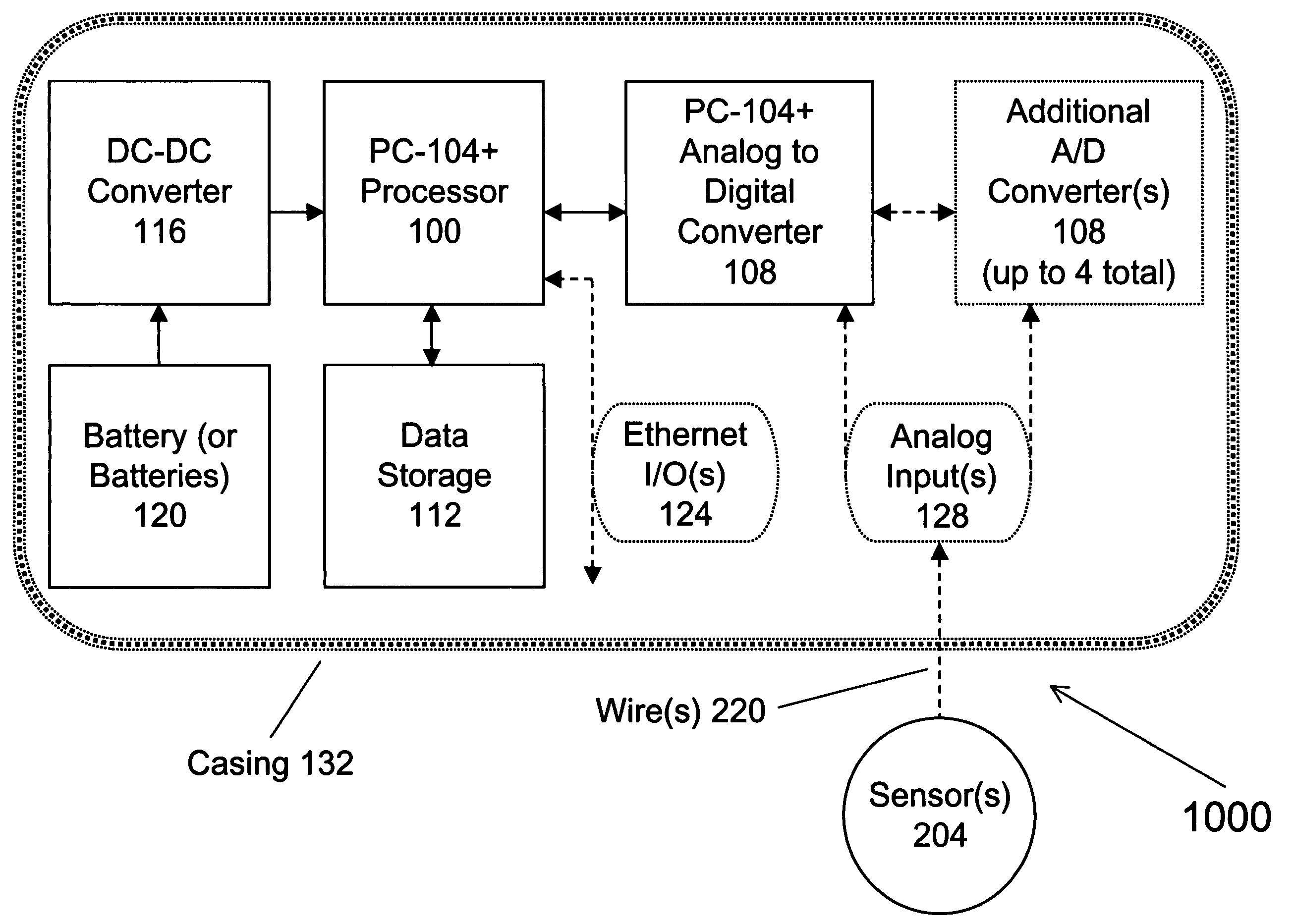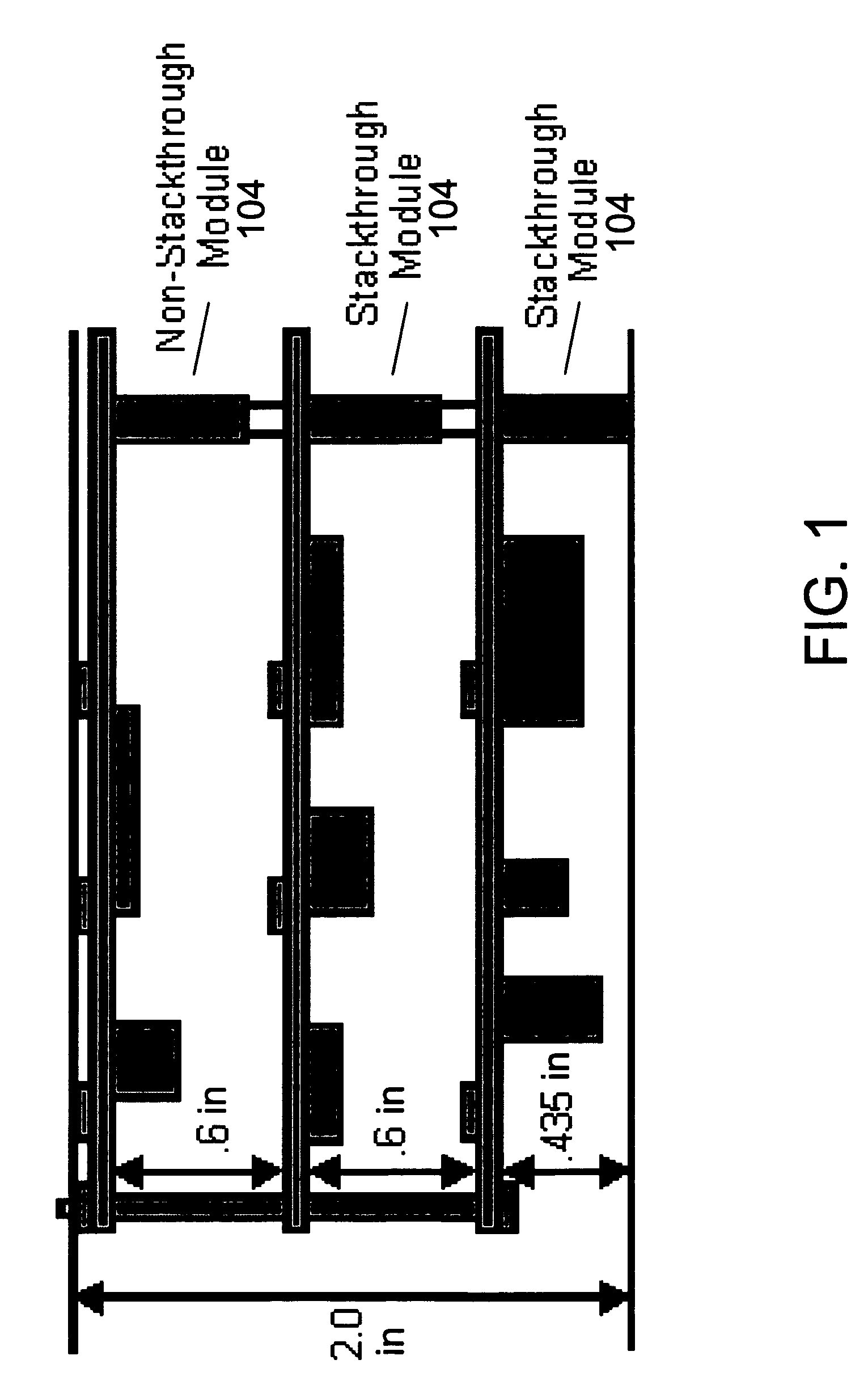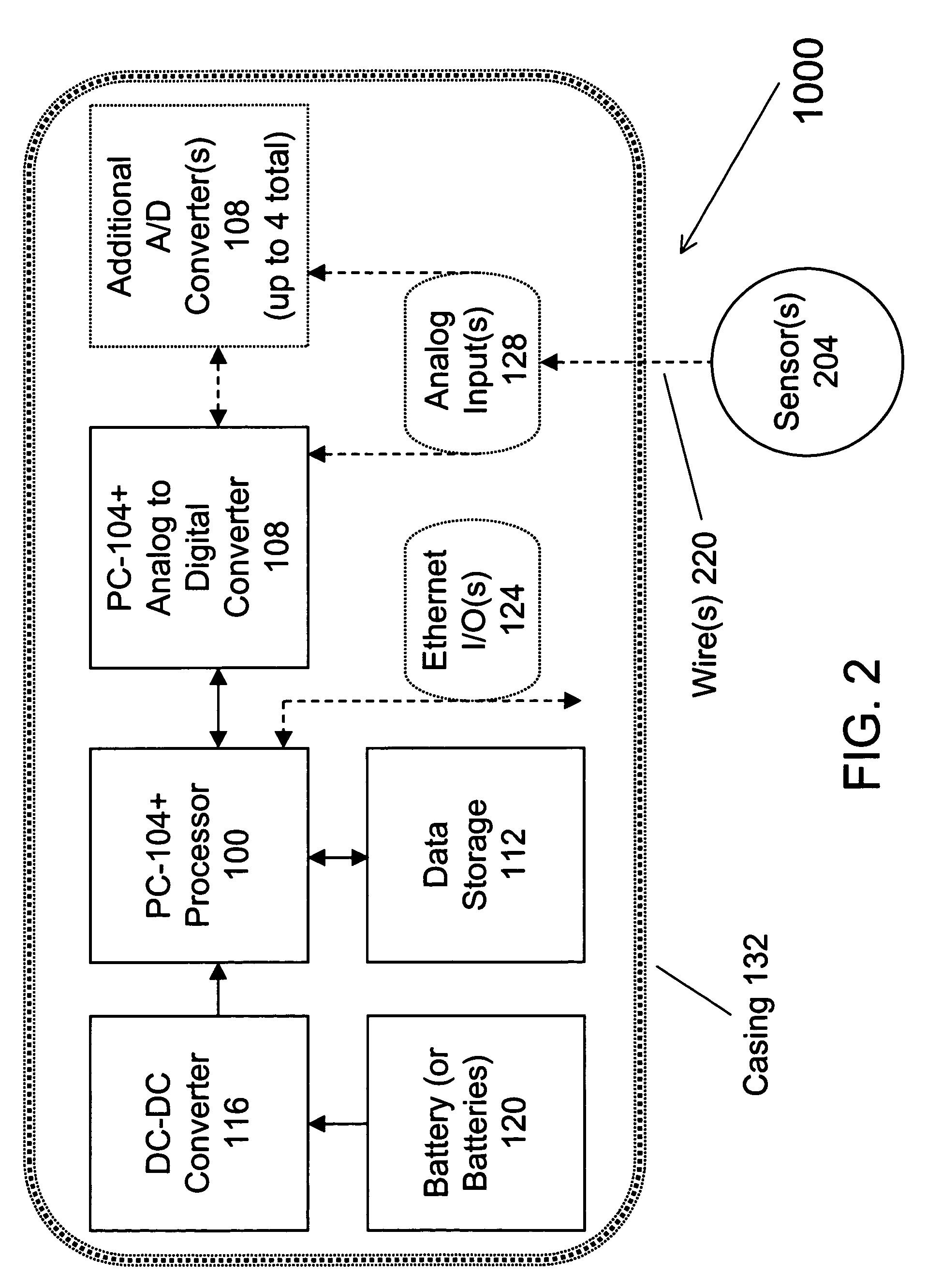Portable data acquisition system
a data acquisition and portability technology, applied in the field of data acquisition, can solve the problems of difficult or impractical acquisition of sensor data in such applications, undesirable external situation certain areas of the hull that do not readily lend themselves to external situations of sensors and other instruments, etc., to achieve superior performance and reduce costs.
- Summary
- Abstract
- Description
- Claims
- Application Information
AI Technical Summary
Benefits of technology
Problems solved by technology
Method used
Image
Examples
Embodiment Construction
[0039] Reference is now made to FIG. 1, which illustrates the stacking of three PC-104 modules 104. The source of the diagram shown in FIG. 1 is the PC-104 Consortium, which describes itself in its website (http: / / www.pc104.org / ) as “a Consortium of over 100 members world wide who have joined together to disseminate information about PC / 104 and to provide a liaison function between PC / 104 and standard organizations.” The inventive system is designed around the PC-104 form factor; the PC-104 form presents a variety of design possibilities for inventive practice. According to some inventive embodiments, each module 104 with the PC-104 form factor is ≈3.5″×3.5″×1″ in size. The modules contain both a 16-bit ISA and a 32-bit PCI bus running vertically through the board. This allows the PC-104 modules 104 to be directly stacked together, as shown in FIG. 1. In addition to stacking, PC-104 boards 104 can also be connected in parallel with the help of a custom back plane or cabling system, ...
PUM
 Login to View More
Login to View More Abstract
Description
Claims
Application Information
 Login to View More
Login to View More - R&D
- Intellectual Property
- Life Sciences
- Materials
- Tech Scout
- Unparalleled Data Quality
- Higher Quality Content
- 60% Fewer Hallucinations
Browse by: Latest US Patents, China's latest patents, Technical Efficacy Thesaurus, Application Domain, Technology Topic, Popular Technical Reports.
© 2025 PatSnap. All rights reserved.Legal|Privacy policy|Modern Slavery Act Transparency Statement|Sitemap|About US| Contact US: help@patsnap.com



